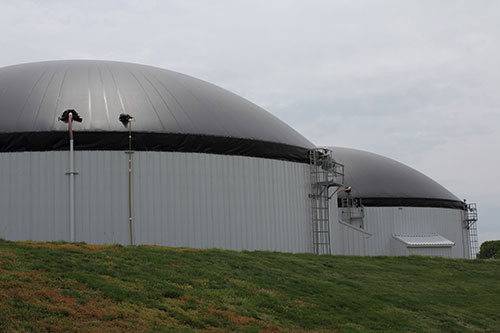
As part of a grander plan to reduce greenhouse emissions by 2025, Agriculture Secretary Tom Vilsack laid out his strategy to partner with agricultural producers and tackle the threat of climate change. Included in that strategy is a lofty goal to install 500 new anaerobic digesters on farms over the next 10 years. That would bring the total to nearly 750.
There were approximately 244 anaerobic digester systems operating on commercial livestock farms across the nation last year, according to AgStar, a joint effort between the EPA, USDA and the Department of Energy. A majority of those anaerobic digester systems, 199, were used on dairy farms. The addition of 500 digesters would triple the number of digesters operating in the U.S.
The framework of USDA's plan consists of 10 "Building blocks for climate action" that span a range of technologies and practices. Through this initiative, USDA will utilize provisions from the 2014 Farm Bill to offer incentives and technical assistance to farmers, ranchers and land owners.
Building partnerships with producers to encourage broader use of anaerobic digesters, lagoon covers, composting and solid separators to reduce methane emissions is just one of the 10 building blocks set forth by the USDA. Support for rotational grazing management will be another focus area, with a goal to add 4 million acres of grazing land over the next decade.
Another building block will work to improve soil resilience and improve productivity by promoting conservation tillage and no-till strategies, cover crops, perennial forages and more. This effort aims to expand the use of no-till production to cover more than 100 million acres by 2025.
Some of the other building blocks will focus on forestry, nitrogen stewardship efficient energy use.
Last year, President Obama made a pledge to reduce U.S. greenhouse gas emissions 26 to 28 percent below 2005 levels by the year 2025. Through these efforts, USDA expects the agricultural industry will be able to help do its part and reduce net emissions and enhance carbon sequestration by more than 120 million metric tons. That would be the equivalent of taking 25 million cars off the road.
(c) Hoard's Dairyman Intel 2015
May 4, 2015








